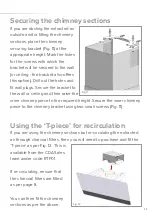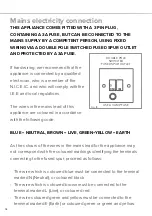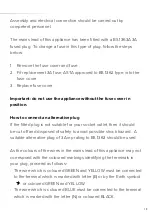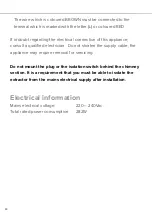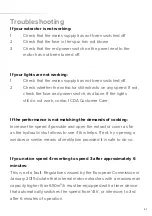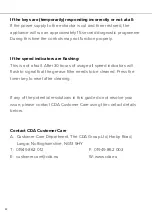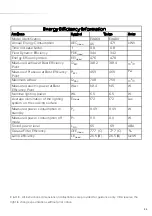
12
Ducting and ventilation
For best performance and lowest noise output, we recommend the
use of 150mm ducting. You can also use smaller diameter ducting but
this will reduce performance and potentially increase the noise level
of the extractor whilst in use. In general, the less ducting you use (i.e.
distance and bends) the more efficient your extractor will be.
This extractor offers two options for ducting out - through a wall and
through the ceiling. The factory setup is for ducting through the ceiling
but the motor can be easily rotated to minimise on bends in ducting
and therefore maximise efficiency. To swap the motor for horizontal
(through a wall) ducting, follow the steps below:
Whilst supporting the motor group, remove all screws shown in Fig. 4.
Ensure that there is no power being supplied to the appliance during
the installation process.
Flip the motor and motor plate and re-fit the screws (Fig. 5). If you
need to access the inside of the appliance at this stage, use a small
flathead screwdriver or similar tool to pop the collar out/off the
knuckle of the hydraulic strut holding the extractor cover in place. The
knuckle will then be easily removable. Ensure that someone is helping
you who can hold the cover open for you.
Remember to re-fit and
secure the hydraulic strut knuckle and collar.
With the desired motor orientation, prepare the ducting outlet area.
You may wish to fit the chimney installation bracket and screws first.

















